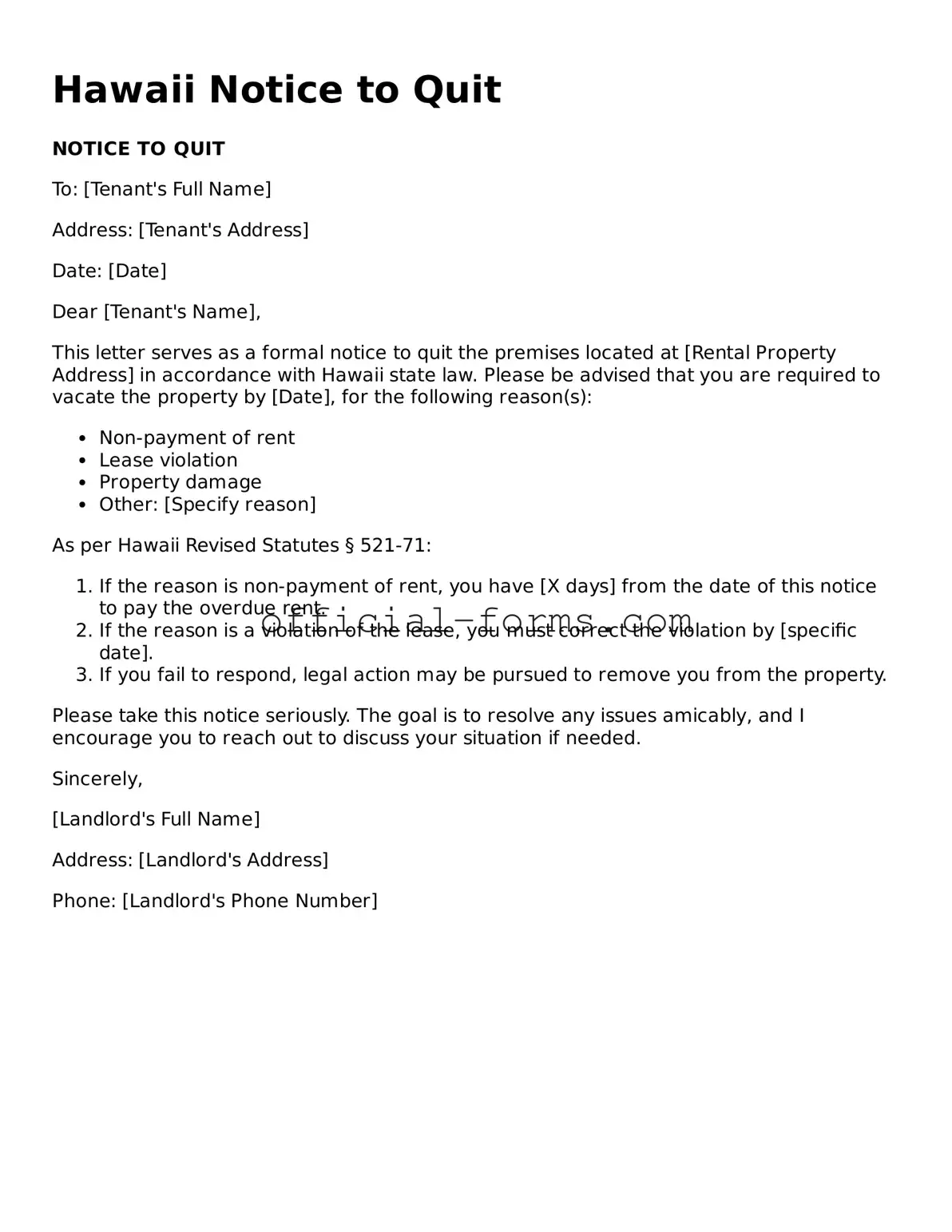The Hawaii Notice to Quit form serves as a crucial legal instrument in the landlord-tenant relationship, particularly when a landlord seeks to terminate a tenancy. This form is utilized to formally notify a tenant that they must vacate the rental property, often due to lease violations, non-payment of rent, or the expiration of a rental agreement. Understanding the nuances of this document is essential for both landlords and tenants, as it outlines the specific grounds for eviction and the timeline within which the tenant must respond. The form requires clear identification of the parties involved, including the landlord’s and tenant’s names and addresses, as well as a description of the property in question. Additionally, it specifies the date by which the tenant must leave the premises, ensuring that all parties are aware of their rights and obligations. By adhering to the proper procedures outlined in this form, landlords can protect their interests while providing tenants with a fair opportunity to address the issues leading to the notice. Ultimately, the Hawaii Notice to Quit form is not just a legal requirement; it embodies the principles of due process and transparency that underpin the landlord-tenant relationship.
